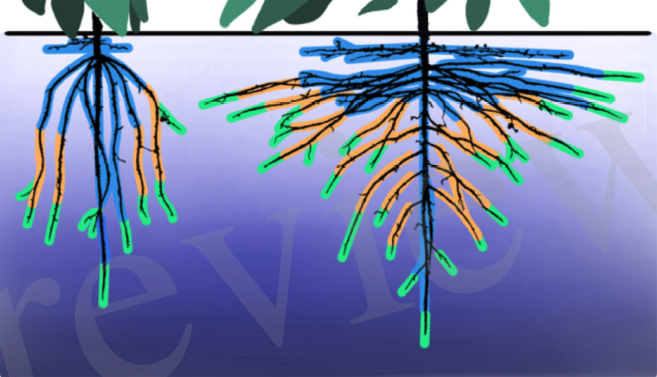
Root architectural and anatomical phenotypes are highly diverse.
Authors
Galindo-Castañeda T, JP Lynch, J Six, M Hartmann
Source
Frontiers in Plant Science, 2022 (in press)
Download Options
in press
Abstract
Root architectural and anatomical phenotypes are highly diverse. Specific root phenotypes can be associated with better plant growth under low nutrient and water availability. Therefore, root ideotypes have been proposed as breeding targets for more stress-resilient and resource-efficient crops. For example, root phenotypes that correspond to the Topsoil Foraging ideotype are associated with better plant growth under suboptimal phosphorus availability, and root phenotypes that correspond to the Steep, Cheap and Deep ideotype are linked to better performance under suboptimal availability of nitrogen and water. We propose that natural variation in root phenotypes translates into a diversity of different niches for microbial associations in the rhizosphere, rhizoplane and root cortex, and that microbial traits could have synergistic effects with the beneficial effect of specific root phenotypes. Oxygen and water content, carbon rhizodeposition, nutrient availability, and root surface area are all factors that are modified by root anatomy and architecture and determine the structure and function of the associated microbial communities. Recent research results indicate that root characteristics that may modify microbial communities associated with maize include aerenchyma, rooting angle, root hairs, and lateral root branching density. Therefore, the selection of root phenotypes linked to better plant growth under specific edaphic conditions should be accompanied by investigating and selecting microbial partners better adapted to each set of conditions created by the corresponding root phenotype. Microbial traits such as nitrogen transformation, phosphorus solubilization, and water retention could have synergistic effects when correctly matched with promising plant root ideotypes for improved nutrient and water capture. We propose that elucidation of the interactive effects of root phenotypes and microbial functions on plant nutrient and water uptake offers new opportunities to increase crop yields and agroecosystem sustainability.

